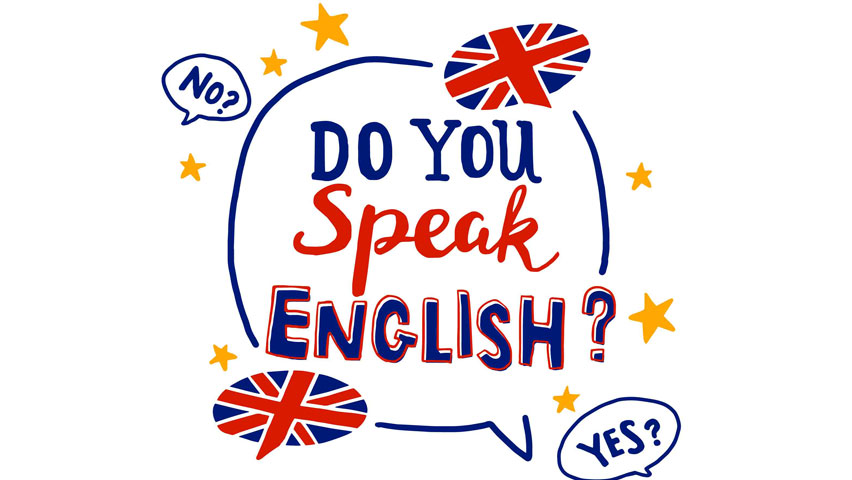Spanish is one of the most widely spoken languages in the world, second only to Mandarin Chinese. It is the official language in 21 countries and is spoken by an estimated 470 million people. Spanish is also the second most studied language in the world. So, if you are thinking of learning Spanish, you are definitely not alone.
But how hard is it to learn Spanish for English speakers? The answer to that question really depends on your level of English and Spanish proficiency. If you are a beginner, it will likely be a bit more difficult for you to learn Spanish than if you are already proficient in Spanish. This is because Spanish and English share many similarities in terms of grammar and vocabulary. However, if you are already proficient in Spanish, learning to speak English will be much easier for you.
One of the best ways to learn Spanish is to find a tutor or class that is tailored to your level of proficiency. There are many different resources available online and in print that can help you learn Spanish, but it is always best to have a teacher who can help you with any questions or problems you may have.
In general, however, it is not particularly difficult to learn Spanish for English speakers. With a bit of dedication and practice, you should be able to learn to speak and understand Spanish relatively easily.
How long does it take an English speaker to learn Spanish?
There is no one answer to the question of how long it takes an English speaker to learn Spanish, as the amount of time necessary for mastery depends on a variety of individual factors. However, it is possible to provide a general estimate of the amount of effort required and the various stages that must be passed through in order to achieve fluency.
Generally, it is said that it takes around 1,000 hours of study to achieve a level of fluency in Spanish. This includes both classroom instruction and self-study. In order to achieve this level of fluency, students must be able to understand, speak, read, and write in Spanish.
The first stage of learning Spanish is understanding the basics of the language. This includes learning how to pronounce words correctly and understanding the basic grammar structures. This stage usually takes around 100-200 hours of study.
The next stage is learning how to use Spanish in conversation. This includes improving fluency and mastering idiomatic expressions. This stage usually takes around 400-500 hours of study.
The final stage is mastering the language. This includes refining grammar skills and learning more complex vocabulary. This stage usually takes around 300-400 hours of study.
It is important to note that these estimates are just that – estimates. The amount of time necessary for mastery will vary depending on the individual. However, these figures provide a general idea of the amount of effort required to achieve fluency in Spanish.
How much time does it take to learn Spanish fluently?
There is no one answer to the question of how long it takes to learn Spanish fluently. Everyone learns differently and at different speeds. However, if you are dedicated to learning Spanish, there are a few things you can do to speed up the process.
One way to improve your Spanish fluency is to expose yourself to as much Spanish as possible. This can be done by watching Spanish TV shows, listening to Spanish music, reading Spanish books, or speaking with Spanish speakers. The more you immerse yourself in the Spanish language, the faster you will learn.
Another way to improve your Spanish fluency is to practice speaking the language as often as possible. This can be done with a Spanish tutor or with friends who are also learning Spanish. The more you practice speaking Spanish, the better you will become at it.
Finally, to improve your Spanish fluency, you need to make sure you are studying the right things. If you are only studying grammar, you will not become fluent in Spanish. You need to also focus on learning vocabulary and conversational phrases. The best way to do this is by using a Spanish course that focuses on conversation and vocabulary building.
With a little bit of effort, you can become fluent in Spanish in a relatively short amount of time. It all depends on how much time and effort you are willing to put into it.
What is the hardest language to learn for an English speaker?
There is no definitive answer to this question as it depends on individual preferences and abilities. However, some languages are generally regarded as being more difficult to learn than others, due to factors such as their complexity, grammatical structure, and pronunciation.
One of the most difficult languages for English speakers to learn is Arabic. This is because Arabic is a completely different language family to English, meaning that many of the rules and structures are completely unfamiliar. In addition, the pronunciation is quite challenging, particularly the guttural consonants.
Another challenging language for English speakers is Japanese. This is due to the fact that Japanese is a completely syllabic language, meaning that each character represents a syllable, as opposed to a letter. In addition, the grammar is extremely complex, and the writing system uses a combination of three different scripts.
Swahili is also often cited as one of the most difficult languages to learn for English speakers. This is due to the fact that it is a tonal language, which means that the meaning of a word can change depending on the tone of voice used when it is spoken. In addition, the grammar is quite complex, and there are many words that are similar but have different meanings.
What is the hardest language to speak fluently?
The hardest language to speak fluently is a matter of some debate. Some people say that it is Arabic, because of its complex grammar and syntax. Others say that it is Chinese, because of its thousands of characters and its tonal language system. Still others argue that it is Japanese, because of its writing system, which uses three different scripts. However, the most difficult language to speak fluently is undoubtedly Esperanto.
Esperanto is a constructed language created by L.L. Zamenhof in 1887. It is designed to be easy to learn for people of all languages. However, it is not as easy to speak as it is to learn. There are many idiomatic expressions that do not have direct translations from one language to another. In addition, the grammar is more complex than that of most other languages.
All of this makes Esperanto one of the most difficult languages to speak fluently. However, it is also one of the most rewarding languages to learn. Esperanto speakers from all over the world come together to share their culture and language in a way that is not possible with any other language.
What are the top 4 hardest languages to learn?
There are a number of languages considered to be difficult to learn. The four that are often cited as the hardest are Arabic, Chinese, Japanese and Korean.
Arabic is difficult to learn for native English speakers because it is a foreign language and has a different alphabet. The grammar is also quite complex, with a number of verb tenses and verb forms that must be learned.
Chinese is difficult to learn for native English speakers because of the large number of characters that must be learned in order to be able to read and write. The grammar is also difficult, with a number of verb tenses and verb forms that must be learned.
Japanese is difficult to learn for native English speakers because it has a different alphabet and grammar that is different from English. In addition, Japanese is a phonetic language, which means that the pronunciation of each word is based on the spelling of the word.
Korean is difficult to learn for native English speakers because it has a different alphabet and grammar that is different from English. In addition, Korean is a phonetic language, which means that the pronunciation of each word is based on the spelling of the word.
What is the 5 hardest language to learn?
There is no definitive answer to this question as it depends on individual preferences and abilities. However, some languages are generally considered to be more difficult to learn than others.
One of the most difficult languages to learn is Arabic. This is due to its complex grammar and pronunciation, as well as the large number of characters that must be memorized.
Mandarin Chinese is also considered to be quite difficult to learn, partly because of its tonal pronunciation system. Additionally, the characters used in the language can be quite confusing for beginners.
Japanese is another challenging language to learn, due to its combination of three writing systems (kanji, hiragana, and katakana) and its difficult pronunciation.
Swahili is often cited as one of the most difficult languages to learn for English speakers, as it uses a completely different alphabet and has a complex grammar.
Finally, Icelandic is often considered to be one of the most difficult languages to learn due to its lack of a predecessor language. Icelandic also has a complicated grammar and a large number of words that are not found in other languages.



